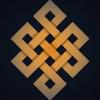Tumu Crisis
From Wikipedia,
Tumu Crisis
Part of Ming-Mongol War
Date September 1, 1449
Location -Xianfu
Result -decisive Mongol victory
Belligerents
Mongols -Ming Dynasty
Commanders and leaders
Tayisung Khan-Esen taishi,Alag-Temur -Zhengtong Emperor ,Wang Zhen†Zhang Fu†
Strength
30,000 men- 500,000 men
Casualties and losses -minimal 200,000+ men
The Tumu Crisis (simplified Chinese: 土木之变; traditional Chinese: 土木之變; pinyin: Tŭmù zhī Bìan); also called the Crisis of Tumubao (simplified Chinese: 土木堡之变; traditional Chinese: 土木堡之變; pinyin: Tǔmù zhī Biàn) or Battle of Tumu Fortress (Chinese: 土木之役; pinyin: Tǔmù zhī Yì), was a frontier conflict between the Oirat Mongols and the Chinese Ming Dynasty which led to the capture of the Zhengtong Emperor on September 1, 1449 and the loss of an army of 500,000 men to a much smaller force.[1] This outcome was largely due to the Chinese army's remarkably bad deployment. The Ming expedition is regarded as the greatest military debacle of the dynasty.
In July 1449 Esen Tayisi (Chinese: 也先台吉) of the Oirat Mongols launched a large-scale three-pronged invasion of China with his puppet khagan Toqtaq-Buqa. He personally advanced on Datong (in northern Shanxi province) in August. The eunuch official Wang Zhen, who dominated the Ming court, encouraged the 22-year-old Zhengtong Emperor to lead his own armies into battle against Esen. Esen's raiding army in size is unknown but a best guess puts it at some 20,000 men. The Ming army of about 500,000 men was hastily assembled; its command was made up of twenty experienced generals and a large entourage of high-ranking civil officials, with Wang Zhen acting as field marshal.
On August 3, Esen's army crushed a badly supplied Chinese army at Yanghe, just inside the Great Wall. The same day the Emperor appointed his half-brother Zhu Qiyu as regent. The next day he left Beijing for Juyong Pass. The objective was a short, sharp march west to Datong via the Xuanfu garrison, a campaign into the steppe, and then to return to Beijing by a southerly route through Yuzhou.
Initially the march was mired by heavy rain. At Juyong Pass, the civil officials and generals wished to halt and send the emperor back to Beijing, but their opinions were overruled by Wang Zhen. On August 16, the army came upon the corpse-strewn battlefield of Yanghe. When it reached Datong on August 18, reports from garrison commanders persuaded Wang Zhen that a campaign into the steppe would be too dangerous. The "expedition" was declared to have reached a victorious conclusion and on August 20 the army set out back toward China proper.
Fearing that the restless soldiers would cause damages to his estates in Yuzhou, Wang Zhen took the decision to strike northeast and return by the same exposed route as they had come. The army reached Xianfu on August 27. On August 30, the Mongols attacked the rearguard east of Xianfu and wiped it out. Soon afterwards, they also annihilated a powerful new rearguard of cavalry led by the elderly general Zhu Yong at Yaoerling. On August 31 the imperial army camped at the post station of Tumu. Wang Zhen refused his ministers' suggestion to have the emperor take refuge in the walled city of Huailai, just 45 km ahead.
Esen sent an advance force to cut off access to water from a river south of the Chinese camp. By the morning of September 1, they had surrounded the Chinese army. Wang Zhen rejected any offers to negotiate and ordered the confused army to move toward the river. A battle ensued between the chaotic Chinese army and the advance guard of Esen's army (Esen was not at the battle). The Chinese army lost all organization and was almost annihilated. The Mongols captured a huge quantity of arms and armour while killing most of the Chinese soldiers. All the high-ranking Chinese generals and court officials were killed. According to some accounts, Wang Zhen was killed by his own officers. The Emperor was captured, and on September 3 was sent to Esen's main camp near Xianfu.
The entire expedition had been unnecessary, ill-conceived, and poorly commanded. The Mongol victory was won by an advance guard of perhaps as few as 5,000 cavalry. Esen, for his part, was not prepared for the scale of his victory or for the capture of the Ming Emperor.
At first, Esen attempted to use the captured emperor to raise a ransom and planned to conquer the undefended Ming capital of Beijing. However his plan was foiled, due to steadfast leadership of the Ming commander in the capital, Yu Qian. The Ming leaders rejected Esen's offer, Yu stated the country was more important than an emperor's life.
The Ming never paid a ransom for the return of the Emperor as Esen released him after four years. Esen himself faced growing criticism for his failure to exploit his victory over the Ming and he was assassinated six years after the battle in 1455.
Although the Oirats later occupied the Ordos Desert, they never again seriously threatened the Ming state.
http://enc.tfode.com/Tumu_Crisis


